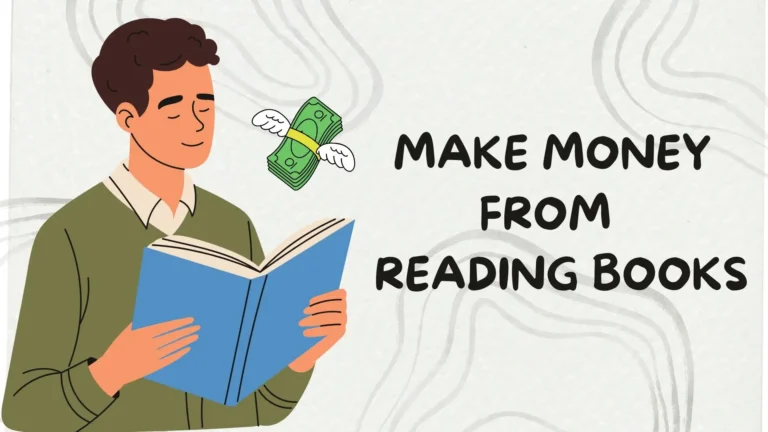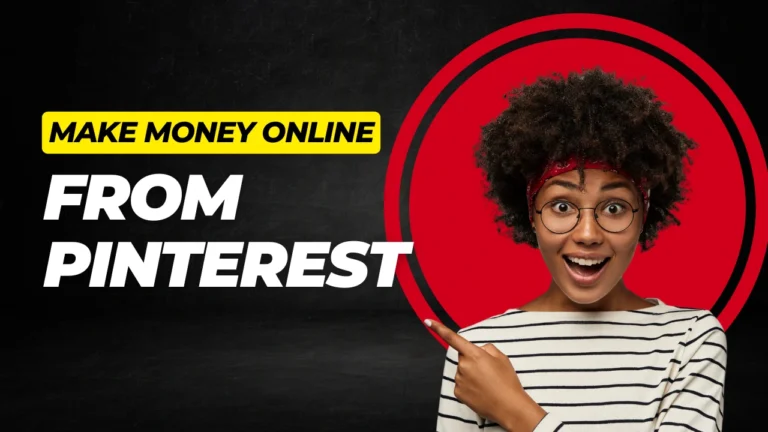How to Begin Freelancing Without Skills and Make $2,000 Monthly
So, you want to start freelancing but have zero experience? Don’t panic. We’ve all been there, scrolling through job boards thinking, “Who’s going to hire me when my resume looks emptier than my fridge at the end of the month?”
Spoiler alert: You don’t need years of experience to make money as a freelancer. You just need the right approach, a little patience, and maybe a decent Wi-Fi connection.
Don’t worry, making mistakes is totally normal. In fact, that’s how most people figure things out and get better. Those first steps teach you more than any guide ever could. So let’s break it down step by step
Why Freelancing is So Awesome
Before we get into the how, let’s talk about the why. Ever wondered why freelancing is trending like a TikTok dance challenge? Here are some reasons:
- You’re the boss: No manager breathing down your neck or asking you to “stay back for just 5 minutes” (which is always an hour, right?).
- Work from anywhere:Your bed, a coffee shop, or even your cousin’s wedding if you really want to.
- You control the money: Want to earn more? Take more projects. It’s that simple.
- No fancy degree needed: Clients care about what you can do, not what’s written on a certificate.
Sounds good? That’s why so many people are jumping into freelancing. And honestly, once you start, you’ll wonder why you didn’t do it earlier.
Step 1: Pick a Skill That Doesn’t Need a PhD
Here’s the secret no one will tell: clients don’t care if you learned your skill from Harvard or YouTube. They just want results. So, pick something simple to start.
- Content Writing: Can you write like you’re texting a friend? Boom, start writing blogs and social media posts.
- Virtual Assistance: If you can organize your life (or at least pretend to), you can manage someone else’s emails and schedule.
- Graphic Design with Canva: No Photoshop skills? No problem. Canva is your bestie.
- Social Media Management: If you already waste time scrolling Instagram, why not get paid for it?
Still thinking, “But I know nothing”? No worries. There are tons of free resources on YouTube and platforms like Coursera to learn the basics. Invest a few days, not years.
Step 2: Create a Killer Portfolio (Even if You’re New)
“But how do I show work when I have no work?” That’s a Classic newbie question. Here’s how I hacked it:
- Do sample projects: Create 2-3 mock projects. If you want to be a writer, write three killer blog posts on trending topics.
- Help a friend for free (just once): Design a logo for your cousin’s bakery. Then proudly show it off as “client work.”
- Join Facebook groups or Reddit: Offer free work for testimonials. Two reviews can make you look legit.
Pro tip: Make your portfolio look professional. Use a free site like Canva or a personal blog. Remember, presentation is everything.
Step 3: Where Do You Find Your First Client?
Now the fun (and slightly scary) part: getting clients. Don’t just sit there refreshing your Gmail like a lost soul. Here’s where to go:
- Fiverr: Great for beginners. Start small, build reviews, then raise prices.
- Upwork: Competitive, but if you write personalized proposals, you’ll stand out.
- Freelancer.com: Another option for small gigs.
- Social Media: Post your skills on LinkedIn, Instagram, or even TikTok. (People hire from there. Crazy, right?)
- Direct Outreach: See a business with ugly social media posts? Slide into their DMs professionally, of course.
Step 4: Price Yourself Smartly
I know you want to charge $100/hour right now, but calm down. Start low to build trust, then increase your rates as you collect reviews. For example:
- First 3 clients: Low rates or even free (consider it “marketing”).
- Next 5 clients: Fair rates ($10–$20/hr depending on niche).
- After 10+ projects: Raise those rates because you’re now experienced!
Step 5: Stay Consistent (Because Overnight Success Is a Myth)
You’ll apply for gigs, get ghosted, and question your life choices. It’s normal. Keep applying, keep learning, and stay active on platforms. The more visible you are, the more chances clients will find you.
Top 7 Freelance Job Ideas for Absolute Beginners
1. Content Writer
If you can write like you’re texting a friend, congratulations—you’re halfway to being a content writer. Businesses, bloggers, and even influencers need content every day. We’re talking blog posts, social media captions, product descriptions, email newsletters—the list goes on. And the best part? You don’t need a fancy degree or a vocabulary that sounds like Shakespeare.
Why it’s beginner-friendly:
- You already know how to write (hello, you text daily).
- There are endless niches, starting from travel, fitness, tech, and beauty. Pick one you love.
- Demand is HUGE, which means clients are everywhere.
How to start:
- Write 3 sample blogs on trending topics (e.g., “Best Netflix Shows 2025” or “Easy Fitness Hacks”).
- Post them on a free blog (Medium or WordPress) or keep them as Google Docs for your portfolio.
- Start small—Fiverr, Upwork, and even LinkedIn are great places to land your first gig.
Pay range: Beginners often earn $5–$20 per article, but once you level up, you can charge $50–$200 per blog post. Not bad for something you can do in your PJs with a cup of coffee, right?
2. Virtual Assistant (VA)
If you’re organized (or at least better than your messy roommate), you can become a Virtual Assistant. VAs help business owners manage tasks like emails, scheduling meetings, managing social media, and sometimes light research. Basically, you become their behind-the-scenes hero—the one who keeps their chaos in check.
Why it’s beginner-friendly:
- No advanced skills needed, just basic tech knowledge.
- Tons of variety in the work, you’ll never get bored.
- Businesses of all sizes need VAs.
How to start:
- Learn the basics of email tools (like Gmail filters) and calendar apps.
- Offer to help a small business or influencer for free for a week in exchange for a testimonial.
- Then move to paid gigs on Fiverr, Upwork, or specialized VA platforms.
Pro tip: Communication is everything. Reply fast, be reliable, and act like you genuinely care (because clients notice). Also, organize YOUR time before organizing someone else’s.
Pay range: Beginners earn $5–$10/hour, but experienced VAs easily charge $25–$50/hour. Pretty sweet for scheduling meetings while binge-watching Netflix, right?
3. Graphic Designer (with Canva)
You don’t need Photoshop skills to start designing. Canva is like the cheat code for beginners. You can create logos, social media posts, flyers, eBook covers, and even presentations without a single design degree.
Why it’s beginner-friendly:
- Canva is free and easy to use.
- Huge demand for social media graphics.
- Creative work that doesn’t require coding or complex software.
How to start:
- Create 10 sample designs using Canva (Instagram posts, logos, Pinterest pins).
- Show them off in a free portfolio on Behance or a personal blog.
- Offer your first few designs at low rates to get reviews.
Pro tip: Don’t just slap text on a photo. Learn color combinations and font pairing. YouTube tutorials can teach you in 30 minutes. Also, niche down (like Instagram graphics, Pinterest templates) to stand out.
Pay range: $5–$20 per design for beginners. Once you improve, $50–$200 for full branding packages.
4. Social Media Manager
If you already spend hours scrolling TikTok or Instagram, why not get paid for it? Businesses hire social media managers to post content, engage with followers, and grow their accounts. It’s fun, creative, and yes, profitable.
Why it’s beginner-friendly:
- You already know the basics from personal use.
- No degree required, just creativity and consistency.
- Social media is growing like crazy—everyone needs help.
How to start:
- Offer to manage a small business account for free for a week.
- Create a content calendar and post regularly to show results.
- Use tools like Canva for design and Buffer for scheduling.
Pro tip: Learn the basics of analytics (likes, reach, engagement). Clients LOVE numbers that prove growth. And if you can make content go viral? You’re a rockstar.
Pay range: $100–$300/month for beginners managing one platform. With experience, $500–$1000 per client is normal.
5. Transcriptionist
Do you have good listening skills and can type faster than your cat runs when it hears the vacuum cleaner? Then transcription might be your jam. As a transcriptionist, you listen to audio (like podcasts, interviews, or YouTube videos) and type out exactly what you hear.
Sounds simple, right? Well, almost. You’ll need sharp ears and the ability to understand different accents without Googling every other word.
Why it’s beginner-friendly:
- No degree or expensive tools needed.
- You can work at your own pace (perfect for night owls).
- Plenty of entry-level work on platforms like Rev, Scribie, or GoTranscript.
How to start:
- Practice with free audio files online.
- Use free tools like oTranscribe or Express Scribe to make the job easier.
- Start small gigs on transcription websites, then build your profile for bigger clients.
Pro tip: Accuracy matters. A single wrong word can totally change the meaning (and yes, clients notice). Also, invest in decent headphones—your ears will thank you.
Pay range: Beginners earn $5–$15 per hour, but with experience, it can go up to $30/hour. Not bad for working from your couch, right?
6. Proofreader
If typos annoy you like slow Wi-Fi, this job was basically made for you. Proofreaders check written content for grammar mistakes, typos, and punctuation errors. You don’t need to be a grammar professor—just someone who notices details others miss.
Why it’s beginner-friendly:
- No complex tools required (hello, Grammarly).
- Flexible hours—you can literally proofread while sipping coffee at your favorite café.
- Huge demand for blogs, eBooks, social media captions, and newsletters.
How to start:
- Brush up on basic grammar (don’t worry, YouTube has your back).
- Offer to proofread friends’ essays or social media posts for free, then ask for testimonials.
- Create a Fiverr or Upwork gig to attract clients.
Pro tip: Use tools like Grammarly or Hemingway App, but don’t rely on them completely. Human eyes always win.
Pay range: Beginners earn $10–$20/hour, while experienced proofreaders can make $50/hour.
7. Customer Support (Chat or Email)
If you’re friendly and can handle questions without losing your cool, customer support is your go-to. Many businesses need people to handle chat or email inquiries. No awkward phone calls, no dealing with people face-to-face—just typing helpful responses while sitting in your pajamas.
Why it’s beginner-friendly:
- Training is usually provided by the company.
- Requires basic typing and good communication.
- Flexible schedules (perfect if you hate the 9-to-5 grind).
How to start:
- Search for chat or email support jobs on websites like Remote.co, We Work Remotely, or even Upwork.
- Showcase your communication skills in your profile.
- Be patient and polite—companies LOVE that.
Pro tip: Multitasking is key. You might handle multiple chats at once, so keep your cool and don’t mix up customers (nobody likes being called the wrong name!).
Pay range: $8–$15/hour for beginners, up to $25/hour with experience.
Final Thoughts
tarting freelancing with zero experience feels scary. I get it. But let me tell you something—every pro freelancer started exactly where you are right now. No one popped out of the womb writing killer blog posts or managing TikTok accounts.
So, take the leap. Create that portfolio. Apply for those gigs. Even if you hear crickets at first, keep going because clients will come. And when that first $10 hits your account, trust me—you’ll feel like a millionaire.
Ready to start? Go sign up on Fiverr or Upwork today and do ONE thing after reading this. Because nothing changes if you just scroll and dream.
Your freelancing journey starts now. 🙂



